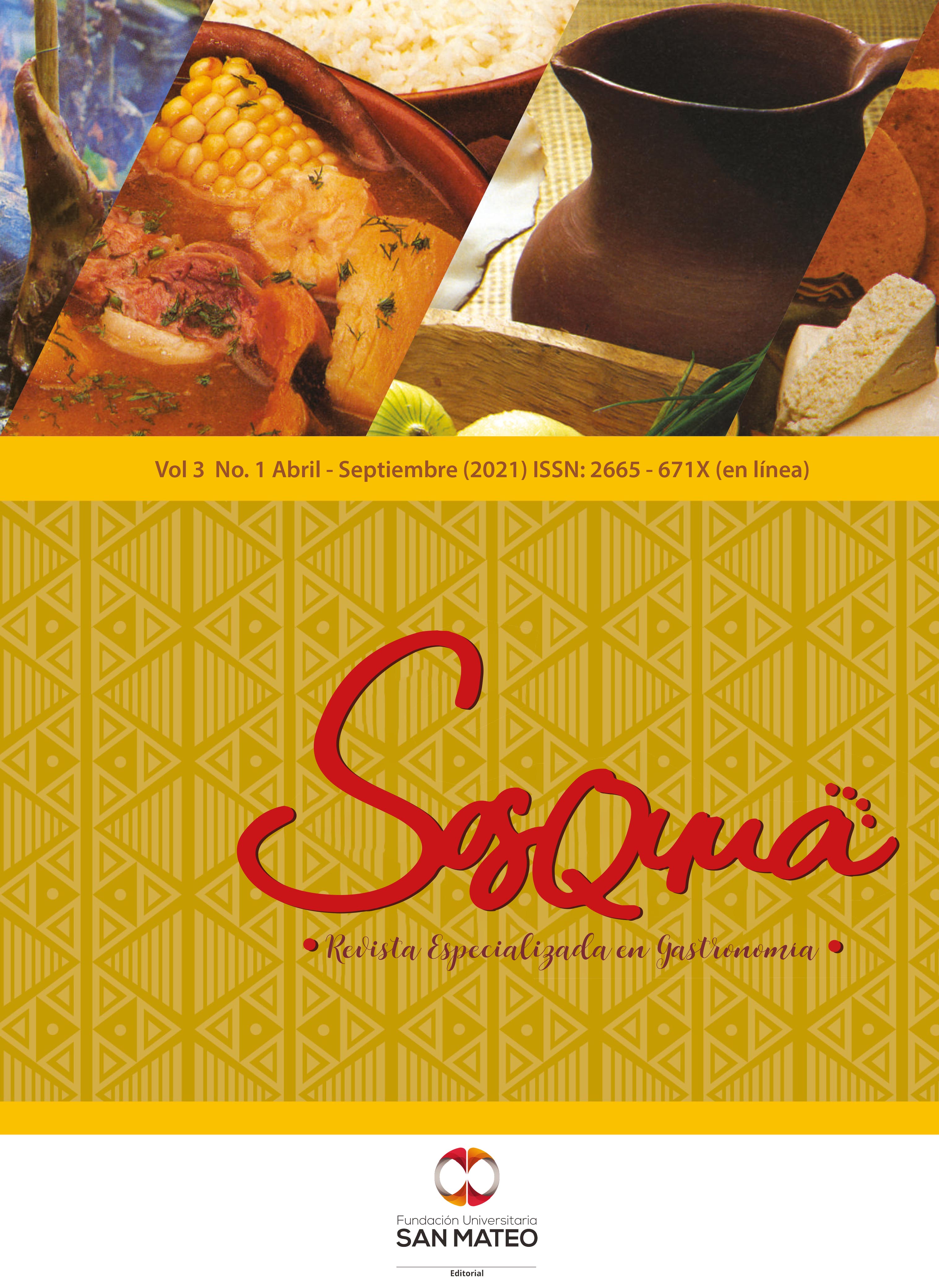The food differential cultural element of people identity
Main Article Content
Abstract
Food represents in the human being more than the obvious and daily fact of food intake in order to provide man with the necessary nutrition that guarantees the normal functioning and maintenance of vital functions, it can be considered that it symbolizes the identity of peoples thanks to the actions that exist between the behavior of individuals and the food itself. This text was carried out with the purpose of explaining the interrelation between food, culture and tourism. Through a bibliographic review that allows the author to generate his own postulates in this regard, which can be used for academic purposes in future research. The results highlight the importance of knowing the experiences, traditions and knowledge of the people in relation to food in order to project an adequate gastronomic management that allows to support the tourist activity using food as the main attractor of the destination.
Downloads
Article Details

This work is licensed under a Creative Commons Attribution-NonCommercial-NoDerivatives 4.0 International License.
Sosquua. Revista Especializada en Gastronomía está comprometida con la preservación del medio ambiente, razón por la que se edita digitalmente a través de la plataforma de acceso abierto: Open Journal System –OJS; la cual permite consolidar una gestión editorial eficiente para cada fase y actor interviniente en el proceso de publicación.
- No genera a los autores pago alguno por gastos de procesamiento de artículos (APC), ni cargos por envío de artículos.
- Así mismo, la suscripción en línea es libre y gratuita.
Los autores de Sosquua. Revista Especialiazada en Gastronomía proporcionan la circulación de sus contenidos a la Fundación Universitaria San Mateo mediante licencia Creative Commons Atribución-NoComercial-SinDerivar 4.0 que permite a terceros compartir la obra siempre que se indique su autor y su primera publicación esta revista.

- Los usuarios pueden consultar el contenido de esta obra a través del sistema de repositorios internos y/o externos en donde la Fundación Universitaria San Mateo tiene o tenga presencia, en la página Web, así como en las redes de información del país y el exterior, con las cuales tenga convenio la institución.
- Se permite la consulta, reproducción parcial, total o cambio de formato con fines de conservación, a los usuarios interesados en el contenido de este trabajo, para todos los usos que tengan finalidad académica, siempre y cuando, mediante la correspondiente cita bibliográfica se le dé crédito a la obra y a su(s) autor(es).
Asi mismo, como autor (es) certifico(amos) que la obra cumple con las normas y requisitos exigidos por el Comité Editorial de la institución; así mismo se asume cualquier responsabilidad frente a la originalidad y tratamiento de la información presentada; excluyendo de cualquier perjuicio o percance a la Fundación Universitaria San Mateo.
References
De Suremain, C.-É. (2016). Culturas culinarias: Comida y sociedad en Asia y África. Revista Estudios de Asia y África, 3(158), 675 - 681. https://doi.org/10.24201/eaa.v51i3.2250
Diccionario etimológico. (2021, 4 de abril). Alimento. http://etimologias.dechile.net/?alimento
Echavarría, B. (2010). Definición de la cultura. Ítaca.
Fraser, M. (15 de diciembre de 1994). Australia makes a meal of the family duels. Sidney Morning Herald.
Ger, G. (1997). Human development and humane consumption: Well-Being beyond the "Good Life". Journal of Public and Marketing, 16(1), 110 - 125. https://doi.org/10.1177/074391569701600110
Hernández, M. (2007). En torno a un plato de comida: aproximaciones al mundo de la comida y el comer. Revista Espacio Abierto, 16(2), 243 - 260.
Herrera Racionero, P. (2014). Del Comer al nutrir: la ignorancia ilustrada del comensal moderno. Revista Reis, (139), 201-212.
Maeseneer, R. (2012). Devorando a lo cubano: una aproximación gastro crítica a los textos relacionados con el siglo XIX y el periodo especial. Iberoamericana-Vervuert.
Milanesio, N. (2014). Cuando los trabajadores salieron de compras. Nuevos consumidores, publicidad y cambio cultural durante el primer peronismo. Siglo XXI.
Moragues, D. (2006). Gestión Cultural y Gestión Turística. En Turismo, cultura y desarrollo (pp. 144 – 150). Agencia Española de Cooperación Internacional.
Ok diario. (2018, 18 de julio). ¿De dónde proviene la expresión “somos lo que comemos”? https://okdiario.com/curiosidades/donde-proviene-expresion-somos-lo-que-comemos-2681435
Onnis, L. (2016). El tiempo congelado, anorexia y bulimia entre el individuo, familia y sociedad. Gedisa editorial.
Organización Mundial de Turismo [OMT]. (2019a). Guía para el desarrollo del turismo gastronómico. OMT.
Organización Mundial de Turismo [OMT]. (2019b). Definiciones de Turismo de la OMT. OMT. https://doi.org/10.18111/9789284420858.
Remedi, F. J. (2017). Modernidad alimentaria y afrancesamiento. Ciudad de Córdoba (Argentina) en el tránsito del siglo XIX al XX. Historia Crítica, 71 - 92.
Santana Talavera, A. (2003). Turismo cultural, culturas turísticas. Revista Horizontes Antropológicos, 9(20), 31 -57. https://doi.org/10.1590/S0104-71832003000200003
Vegas, F. (2001). La ciudad sin lengua: ensayos. Editorial Sentido.

